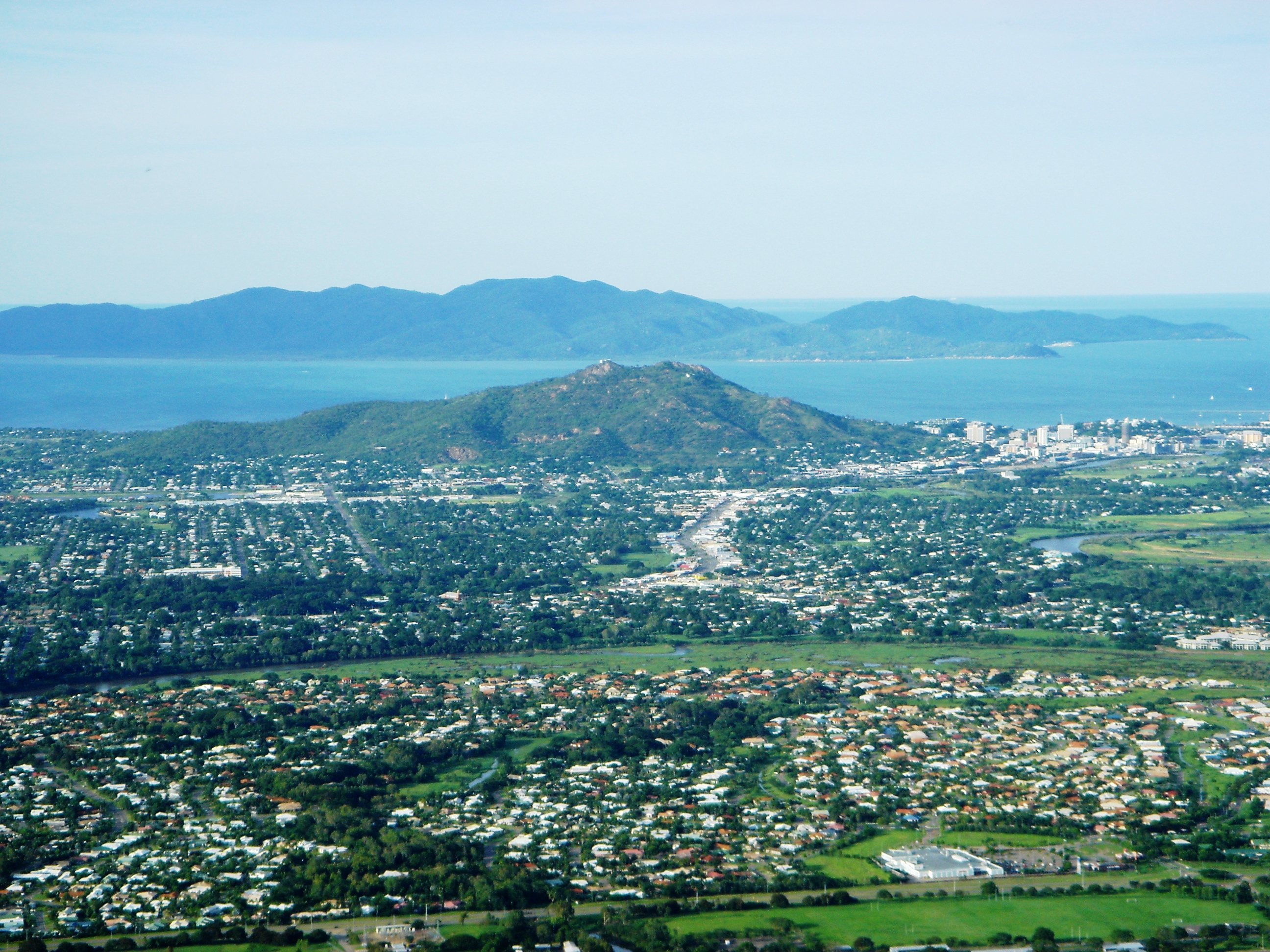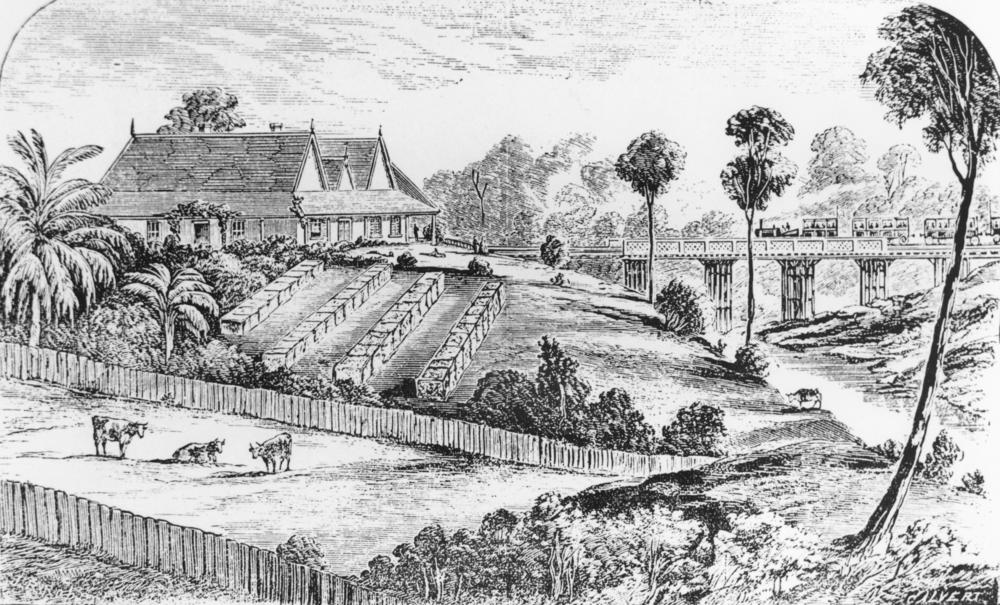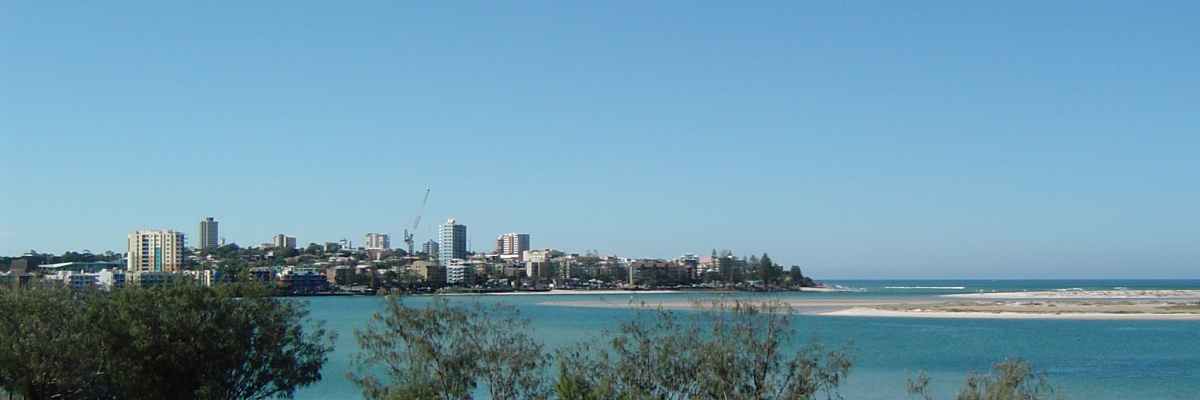|
Coffee Rock
Coffee rock is the common name for the rock-like formations of indurated sands that were formed from ancient river sediments of the Pleistocene age. Coffee rock has been exposed by coastal weathering process on the beaches of Broadwater and Bundjalung National Parks in New South Wales, Australia. In addition, exposures can be seen in North Queensland, Australia at Kurrimine Beach, and in South East Queensland on K'gari and at the entry to Coonowrin Lake, Caloundra Caloundra ( ) is a coastal town and the southernmost town in the Sunshine Coast Region in South East Queensland, Australia. Geography Caloundra is north of the Brisbane central business district. Caloundra is accessible from Landsborough .... Exposed Coffee Rock on the beaches K'gari is more likely the beds of old lakes in the sand dunes when the sea level was lower. In places it is peat-like and embedded with wood ranging from small twigs to large tree trunks up to 1200mm in diameter, with some evidence ... [...More Info...] [...Related Items...] OR: [Wikipedia] [Google] [Baidu] |
Pleistocene
The Pleistocene ( , often referred to as the ''Ice age'') is the geological epoch that lasted from about 2,580,000 to 11,700 years ago, spanning the Earth's most recent period of repeated glaciations. Before a change was finally confirmed in 2009 by the International Union of Geological Sciences, the cutoff of the Pleistocene and the preceding Pliocene was regarded as being 1.806 million years Before Present (BP). Publications from earlier years may use either definition of the period. The end of the Pleistocene corresponds with the end of the last glacial period and also with the end of the Paleolithic age used in archaeology. The name is a combination of Ancient Greek grc, label=none, πλεῖστος, pleīstos, most and grc, label=none, καινός, kainós (latinized as ), 'new'. At the end of the preceding Pliocene, the previously isolated North and South American continents were joined by the Isthmus of Panama, causing a faunal interchange between the two reg ... [...More Info...] [...Related Items...] OR: [Wikipedia] [Google] [Baidu] |
Broadwater National Park
Broadwater is a national park in New South Wales, Australia, 577 km northeast of Sydney. A wide range of various vegetation, coastal rainforests, swamps, open eucalyptus forests are a great refuge for many species of migratory birds. Broadwater is a great place for a family trip, especially if you are a bird watcher. See also * Protected areas of New South Wales The Protected areas of New South Wales include both terrestrial and marine protected areas. there are 225 national parks in New South Wales. Based on the Collaborative Australian Protected Area Database (CAPAD) 2020 data there are 2136 separat ... References National parks of New South Wales Protected areas established in 1974 1974 establishments in Australia {{NewSouthWales-protected-area-stub ... [...More Info...] [...Related Items...] OR: [Wikipedia] [Google] [Baidu] |
Bundjalung National Park
The Bundjalung National Park is a national park located on the north coast of New South Wales, Australia, north-east of Sydney. It protects an area of coastal plain, heathland and solitary beaches between the towns of Iluka and Evans Head. The park features coffee rock formations that can be found on the beaches at its northern end. Background Along the Iluka peninsula coast at the southern end of the park are a number of closely spaced headlands that create small crescent shaped beaches of white sand. Each headland features rock platforms cut by waves and contain rock pools that are havens for intertidal marine life. The park is named for the Bundjalung Aboriginal nation, the original occupiers of the land. Facilities in the park include camping areas at Black Rocks (a nature-based camping area with minimal facilities, adjacent to Ten Mile Beach) and at Woody Head (which provides amenities including hot showers, cabins and a kiosk). The park contains six picnic are ... [...More Info...] [...Related Items...] OR: [Wikipedia] [Google] [Baidu] |
North Queensland
North Queensland or the Northern Region is the northern part of the Australian state of Queensland that lies just south of Far North Queensland. Queensland is a massive state, larger than many countries, and its tropical northern part has been historically remote and undeveloped, resulting in a distinctive regional character and identity. Townsville is the largest urban centre in North Queensland, leading it to be regarded as an unofficial capital. The region has a population of 231,628 and covers . Geography There is no official boundary that separates North Queensland from the rest of the state. Unofficially it is usually considered to have a southern border beginning south of the Mackay Region southern boundary, but historically it has been as far south as Rockhampton. To the north is the Far North Queensland region, centred on Cairns and out west is the Gulf Country. A coastal region centred on its largest settlement is the city of Townsville. The city is the lo ... [...More Info...] [...Related Items...] OR: [Wikipedia] [Google] [Baidu] |
Kurrimine Beach
Kurrimine Beach is a coastal town and locality in the Cassowary Coast Region, Queensland, Australia. In the , the locality of Kurrimine Beach had a population of 729 people. Geography The '' Coral Sea'' forms the eastern boundary. The Kurrimine Beach National Park and Maria Creek National Park are within the locality. History The town was originally called Kurrimine which is believed to be an Aboriginal word meaning ''sunrise'' or ''dawn''. It was renamed Kurrimine Beach on 1 March 1982. In the , the locality of Kurrimine Beach had a population of 729 people. Education There are no schools in Kurrimine Beach. The nearest government secondary school is Silkwood State School in neighbouring Silkwood to the west. The nearest government secondary schools are Tully State High School in Tully to the south-west and Innisfail State College Innisfail State College is a government secondary school and technical college in Innisfail Estate, a suburb of Innisfail, Cassowary Co ... [...More Info...] [...Related Items...] OR: [Wikipedia] [Google] [Baidu] |
South East Queensland
South East Queensland (SEQ) is a bio-geographical, metropolitan, political and administrative region of the state of Queensland in Australia, with a population of approximately 3.8 million people out of the state's population of 5.1 million. The area covered by South East Queensland varies, depending on the definition of the region, though it tends to include Queensland's three largest cities: the capital city Brisbane; the Gold Coast; and the Sunshine Coast. Its most common use is for political purposes, and covers and incorporates 11 local government areas, extending from Noosa in the north to the Gold Coast and New South Wales border in the south (some sources include Tweed Heads, New South Wales which is contiguous as an urban area with Brisbane/Gold Coast), and west to Toowoomba (which is simultaneously considered part of the Darling Downs region). South East Queensland was the first part of Queensland to be settled and explored by Europeans. Settlements initially a ... [...More Info...] [...Related Items...] OR: [Wikipedia] [Google] [Baidu] |
K'gari (Fraser Island)
Fraser Island (Butchulla: ) is a World Heritage-listed island along the south-eastern coast in the Wide Bay–Burnett region, Queensland, Australia. The island is approximately north of the state capital, Brisbane, and is within the Fraser Coast Region local government area. The world heritage listing includes the island, its surrounding waters and parts of the nearby mainland. Fraser Island, and some satellite islands off the southern west coast and thus in the Great Sandy Strait, previously formed the County of Fraser, which was subdivided into six parishes. Among the islands were Slain Island, Tooth Island, Roundbush Island, Moonboom Island, Gardner Island, Dream Island, Stewart Island, and the Reef Islands, all part of the southernmost parish of Talboor. The island is about long and wide. It was inscribed as a World Heritage Site in 1992. The island is considered to be the largest sand island in the world at . It is also Queensland's largest island, Australia's sixth ... [...More Info...] [...Related Items...] OR: [Wikipedia] [Google] [Baidu] |
Coonowrin Lake
Coonowrin is one of the Glass House Mountains, located in Queensland, Australia, located 19 km north of Caboolture or about one hour's drive north of Brisbane. It is easily distinguished because of its rocky formation at the top. It is also known by its unofficial name Crookneck. Dreamtime mythology The mountains are the subjects of several Aboriginal tales and Coonowrin is said to be the son of Tibrogargan and Beerwah. During a violent storm, Tibrogargan commanded his son Coonowrin to take his mother Beerwah and his siblings and help them move to safety. Being scared of the storm, Coonowrin instead ran off and when his father found him he hit him on the back of the head, resulting in Coonowrin's crooked neck. Tibrogargan was so ashamed of his son's cowardice that to this day he sits with his back to Coonowrin. Climbing Coonowrin has been the site of a great amount of climbing historically. However, the mountain was permanently closed to public access in March 1 ... [...More Info...] [...Related Items...] OR: [Wikipedia] [Google] [Baidu] |
Caloundra
Caloundra ( ) is a coastal town and the southernmost town in the Sunshine Coast Region in South East Queensland, Australia. Geography Caloundra is north of the Brisbane central business district. Caloundra is accessible from Landsborough railway station, 21 km away, and the Caloundra bus station. Bribie Island North is located across the Pumicestone Passage. Caloundra marks the coastal, northern extent of the Moreton Bay Marine Park. History Caloundra lies within the Aboriginal Gubbi Gubbi (Kabi Kabi, Cabbee, Carbi, Gabi Gabi) language region. The name ''Caloundra'' is from the Gubbi Gubbi language ''Cullowundoor'' with ''Kal Owen'' meaning 'beech tree' (''Gmelina leichhardtii'') and ''Dha'' meaning 'place'. Caloundra Head was previously known as Petrie Point and Point Wickham (or Wickham Point). Point Wickham takes its name from John Clements Wickham, who did a hydrographic survey of the northern section of Moreton Bay in 1846 and was later the Government Reside ... [...More Info...] [...Related Items...] OR: [Wikipedia] [Google] [Baidu] |
Sandstone In Australia
Sandstone is a Clastic rock#Sedimentary clastic rocks, clastic sedimentary rock composed mainly of grain size, sand-sized (0.0625 to 2 mm) silicate mineral, silicate grains. Sandstones comprise about 20–25% of all sedimentary rocks. Most sandstone is composed of quartz or feldspar (both silicates) because they are the most resistant minerals to weathering processes at the Earth's surface. Like uncemented sand, sandstone may be any color due to impurities within the minerals, but the most common colors are tan, brown, yellow, red, grey, pink, white, and black. Since sandstone beds often form highly visible cliffs and other topography, topographic features, certain colors of sandstone have been strongly identified with certain regions. Rock formations that are primarily composed of sandstone usually allow the percolation of water and other fluids and are porosity, porous enough to store large quantities, making them valuable aquifers and petroleum reservoirs. Quartz-b ... [...More Info...] [...Related Items...] OR: [Wikipedia] [Google] [Baidu] |
Geology Of Queensland
The geology of Queensland can be subdivided into several regions with different histories. Along the east coast is a complex of Palaezoic to Cainozoic rocks while much of the rest of the state is covered by Cretaceous and Cainozoic rocks. A Precambrian basement is found in the north west and Cape York regions. The Thomson Orogen occurs in the central and southern parts of Queensland, but is mostly covered by younger basins. The North Queensland Orogen is along the coast from Charters Towers to Princess Charlotte Bay. The Bowen Gunndedah Sydney basin can be considered as one system that extends into Queensland. The New England Orogen is on the coastal parts from the border with New South Wales north to Ayr. Devonian The Drummond Basin is a geological basin in central and northern Queensland which consists of Late Devonian to early Carboniferous shallow-marine and continental sediments. Precambrian The Precambrian basement in Queensland is west of the Tasman Line. I ... [...More Info...] [...Related Items...] OR: [Wikipedia] [Google] [Baidu] |





Saunders_Quarry-1.jpg)
